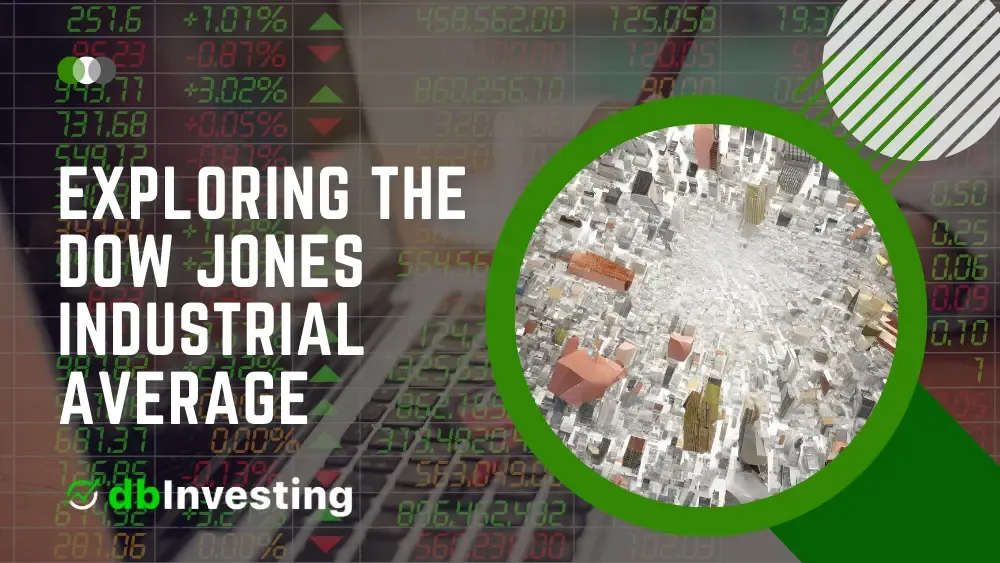History of the Dow Jones Industrial AverageUnderstanding the DJIAConstituent StocksSignificance of the Dow Jones Industrial AverageDow Jones ChartHow to Interpret Dow Jones ChartsDow Jones and Economic Events
The Dow Jones Industrial Average (DJIA), often simply referred to as the Dow Jones or Dow, is one of the most well-known and widely followed stock market indices in the world. Established in 1896 by Charles Dow and Edward Jones, this index has played a pivotal role in tracking the performance of the United States’ stock market.
In this comprehensive article, we will delve into the history, composition, significance, and various aspects of the Dow Jones Industrial Average, including its chart and constituent stocks.
History of the Dow Jones Industrial Average
The Dow Jones Industrial Average has a rich history that spans over a century. It was created as a tool to measure the overall performance of the U.S. stock market. Initially, the index included only 12 industrial companies, and its first closing value was 40.94 on May 26, 1896. Over time, the index expanded and evolved to reflect the changing dynamics of the American economy.
Understanding the DJIA
The Dow Jones Industrial Average is often referred to as a “price-weighted” index. Unlike other indices like the S&P 500, which are weighted by market capitalization, the DJIA calculates its value by summing up the stock prices of its constituent companies and dividing by a divisor.
This unique methodology has both strengths and limitations, as it can be influenced by the absolute price changes of the stocks within the index.
Constituent Stocks
The Dow Jones Industrial Average consists of 30 large, blue-chip companies representing various sectors of the U.S. economy.
These companies are carefully selected by the index’s governing body, the S&P Dow Jones Indices, and are often considered industry leaders. Some of the well-known Dow components include Apple, Microsoft, Coca-Cola, and Goldman Sachs.
#CompanySymbolWeight PriceChg% Chg1Unitedhealth Group IncUNH9.889526 505.22-0.23(-0.05%)2Goldman Sachs Group IncGS6.373112 326.722.90(0.89%)3Microsoft CorpMSFT6.154111 313.771.63(0.52%)4Home Depot IncHD5.939956 303.080.54(0.18%)5Caterpillar IncCAT5.315513 270.450.93(0.35%)6Mcdonald’s CorpMCD5.228495 268.530.81(0.30%)7Amgen IncAMGN5.171903 268.58-0.46(-0.17%)8Visa IncV4.522654 230.200.55(0.24%)9Salesforce IncCRM3.99899 203.591.10(0.54%)10Boeing CoBA3.852473 196.570.93(0.48%)11Honeywell International IncHON3.718359 189.952.06(1.10%)12Apple IncAAPL3.412534 172.540.58(0.34%)13Chevron CorpCVX3.269699 168.560.76(0.45%)14Travelers Cos IncTRV3.252838 168.670.71(0.42%)15Walmart IncWMT3.160392 162.800.30(0.18%)16Johnson & JohnsonJNJ3.105933 158.58-0.45(-0.28%)17American Express CoAXP2.969687 151.860.74(0.49%)18Procter & Gamble CoPG2.919879 149.340.02(0.01%)19Intl Business Machines CorpIBM2.838868 143.660.42(0.29%)20Jpmorgan Chase & CoJPM2.838287 145.610.68(0.47%)21Merck & Co. Inc.MRK2.051241 105.750.36(0.34%)223m CoMMM1.837086 94.340.46(0.48%)23Nike IncNKE1.755881 90.590.42(0.46%)24Walt Disney CoDIS1.570021 80.370.32(0.40%)25Coca Cola CoKO1.104693 56.590.06(0.11%)26Cisco Systems IncCSCO1.036474 52.850.14(0.27%)27Dow IncDOW0.990154 50.700.22(0.44%)28Intel CorpINTC0.66456 33.950.12(0.37%)29Verizon Communications IncVZ0.64266 33.070.08(0.24%)30Walgreens Boots Alliance IncWBA0.413582 21.190.06(0.26%)27.09.23 last update
Significance of the Dow Jones Industrial Average
The Dow Jones Industrial Average is widely regarded as a barometer of the U.S. stock market’s health and a key indicator of economic trends. Many investors and financial professionals use the Dow as a reference point for assessing market conditions, making investment decisions, and gauging the overall economic sentiment.
Dow Jones Chart
A Dow Jones chart is a graphical representation of the index’s historical performance over time. These charts are invaluable tools for investors, analysts, and traders who want to visualize trends, identify patterns, and make informed investment decisions.
Dow Jones charts can be found in various forms, including line charts, bar charts, and candlestick charts, and can cover different timeframes, from minutes to decades.
How to Interpret Dow Jones Charts
Interpreting Dow Jones charts involves analyzing price movements, identifying support and resistance levels, and using technical indicators to make predictions about future price movements. Traders and investors often look for trends, chart patterns (such as head and shoulders, double tops, and flags), and key levels to make trading decisions.
Dow Jones and Economic Events
The Dow Jones Industrial Average can be significantly influenced by economic events and news releases. Events such as Federal Reserve announcements, employment reports, corporate earnings, and geopolitical developments can lead to rapid fluctuations in the index. Understanding how these events impact the Dow is crucial for investors.
Conclusion
The Dow Jones Industrial Average is a venerable index with a long history of tracking the performance of the U.S. stock market. It remains a critical benchmark for investors and financial professionals worldwide.
Understanding its history, composition, and significance, as well as how to interpret Dow Jones charts, is essential for anyone looking to navigate the complex world of finance and investments.

 Institutional Site
Institutional Site 